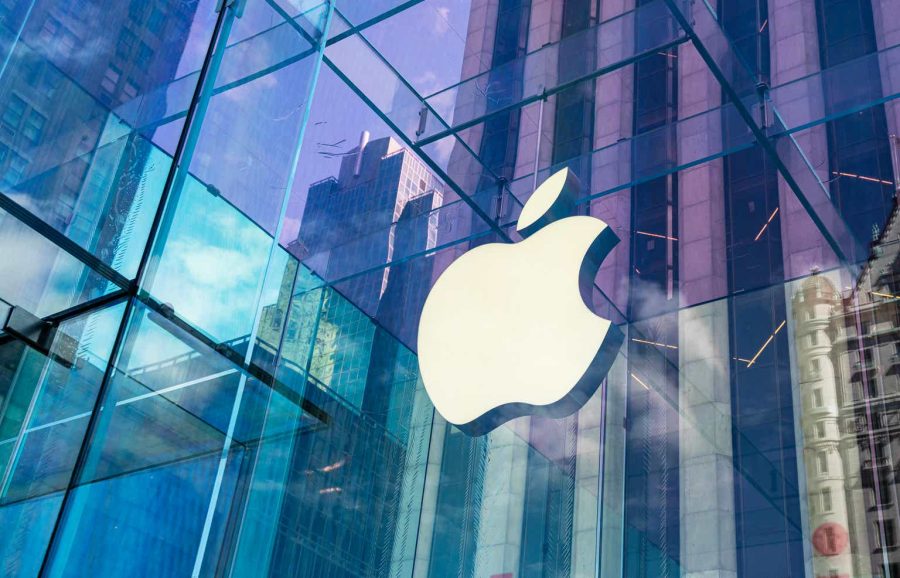July 14, 2024 This Week Top S&P 500 Gainers & Losers
Tesla Q2: The Bottom Is Likely In
Tesla: Time To Take Profits
Microsoft: The Q4 Results Should Surprise You
Tesla: Optimus And FSD Probably Won’t Save The Day
April 23, 2024 Maximizing Profits: When is the Right Time to Sell Your Business?
April 12, 2024 Improve Your Financial Status: A How-To Guide
April 12, 2024 How ZIM Integrated Container Tracking is Revolutionizing Global Trade
March 15, 2024 6 Best Growth Stocks To Buy Now According to Metatrader 5

Apple (AAPL) Stock Forecast for 2024–2028. Sell or Buy?
Updated: July 27, 2024 (07:22)
Sector: TechnologyThe share price of Apple Inc. (AAPL) now
50/200 Day Moving Average: $208.47 / $188.12
This figure corresponds to the Average Price over the previous 50/200 days. For Apple stocks, the 50-day moving average is the support level today.
For Apple stocks, the 200-day moving average is the support level today.
Are you interested in Apple Inc. stocks and want to buy them, or are they already in your portfolio? If yes, then on this page you will find useful information about the dynamics of the Apple stock price in 2024, 2025, 2026, 2027, 2028. How much will one Apple share be worth in 2024 - 2028?
When should I take profit in Apple stock? When should I record a loss on Apple stock? What are analysts' forecasts for Apple stock? What is the future of Apple stock? We forecast Apple stock performance using neural networks based on historical data on Apple stocks. Also, when forecasting, technical analysis tools are used, world geopolitical and news factors are taken into account.
Apple stock prediction results are shown below and presented in the form of graphs, tables and text information, divided into time intervals. (Next month, 2024, 2025, 2026, 2027 and 2028) The final quotes of the instrument at the close of the previous trading day are a signal to adjust the forecasts for Apple shares. This happens once a day.
Historical and forecast chart of Apple stock
The chart below shows the historical price of Apple stock and a prediction chart for the next month. For convenience, prices are divided by color. Forecast prices include: Optimistic Forecast, Pessimistic Forecast, and Weighted Average Best Forecast. Detailed values for the Apple stock price can be found in the table below.
Long-term forecasts by years.

Forecasting AAPL Stock: Unveiling Key Influences and Strategic Predictions

Apple Inc. (AAPL) remains a focal point for investors, particularly those pondering whether apple stock is a good buy. Several pivotal factors are poised to impact AAPL stock rates in the near future, offering critical insights for accurate forecasting.
Major Factors Influencing AAPL Stock Rates
Foremost among these is the robust iPhone pricing power. Apple's ability to command premium prices for its flagship iPhone models ensures sustained revenue growth, reinforcing investor confidence in apple stock forecasts.
An additional boost comes from growth in service revenues. With services like iCloud, Apple Music, and Apple TV+ reaching an all-time high of $85.2 billion, these high-margin recurring revenues further stabilize Apple’s financial health and make apple stock a good buy for many.
Moreover, the integration of AI with iPhones is anticipated to drive significant demand for new upgrades, strengthening Apple’s market position and positively influencing AAPL’s stock price.
Conversely, analysts must consider geopolitical risks, particularly Apple’s exposure to China. Manufacturing and market dependencies in China pose substantial risks amid U.S.-China tensions, which could disrupt supply chains and affect revenue.
- iPhone Pricing Power: Ensures premium revenue and investor confidence.
- Growth in Service Revenues: Provides high-margin, recurring income.
- Integration of AI: Expected to drive a surge in iPhone upgrades.
- China Exposure: Represents geopolitical risks affecting supply and revenue.
Lastly, while AAPL's high valuation multiples reflect strong growth potential, they also suggest caution under market volatility. Analysts must balance this premium against Apple's overall strong performance to make accurate predictions on apple stock rates.
In conclusion, by analyzing these core factors, analysts can derive informed forecasts about whether apple stock is a buy, thus helping investors make strategic decisions.
Review the original Analysis

Will Apple’s Valuation Multiple Cause a Stock Price Correction?

Analysts are closely monitoring various factors that could influence the future trajectory of Apple (AAPL) stock. The most critical events include Apple’s high valuation multiple, declining sales dynamics, Vision Pro’s market performance, AI investments, and the share buyback program.
Key Influencers on AAPL Stock Forecast
One of the most pressing concerns is Apple's Price-to-Free-Cash-Flow (P/FCF) multiple, which has soared to a 10-year high of ~34x. This high multiple appears unsustainable given the current growth dynamics. Analysts argue that if the market re-evaluates Apple based on actual performance, a significant stock price correction is possible.
Sales dynamics are another major factor. With a nearly 9% drop in iPhone sales and weak performance in Asia, Apple's growth appears stunted. Although India offers some growth potential, it seems insufficient to offset the broader decline in mature markets like the U.S. and Europe.
Additionally, Vision Pro has failed to make a substantial impact on sales since its launch, undermining expectations for it to be a significant sales driver.
While AI investments provide potential, their ability to substantially boost revenue and justify the current stock valuation remains uncertain. Lastly, the $110 billion share buyback program may offer temporary support but is unlikely to sustain a high stock price in the long term.
- High Valuation Multiple
- Declining Sales Dynamics
- Underperformance of Vision Pro
- Uncertain Future of AI Investments
- Limited Impact of Share Buyback Program
Analysts should consider these factors when predicting changes in AAPL’s stock price. An accurate Apple stock forecast requires a holistic approach that incorporates these elements to gauge the company's true valuation and future potential.
Review the original Analysis

Unveiling the Future of Apple Stock: Key Factors Driving AAPL Rates

As investors keenly watch the stock market, predicting the movement of AAPL stock has become a crucial task. Several near-future events and influential factors will play a significant role in determining the trajectory of Apple’s stock rate.
Key Drivers of AAPL Stock Prices
One of the most significant factors anticipated to influence Apple stock forecast is the integration of advanced AI capabilities through Apple Intelligence. Market analysts believe that Apple's strong vertical integration strategy and generative AI features could revolutionize consumer experiences, driving substantial consumer demand and loyalty.
Furthermore, iPhone sales and upgrade cycles remain paramount. Analysts project a notable spike in iPhone sales driven by the new AI-enhanced features, potentially increasing Average Selling Prices (ASPs) by 5% annually. Higher ASPs have the potential to boost revenue significantly, positively impacting AAPL’s stock value.
Hardware monetization strategies also play a critical role. Apple's strategy to charge premium prices for AI-enabled devices, due to higher RAM and storage requirements, could result in higher ASPs. This, combined with Apple’s advanced silicon chips, can greatly influence stock prices.
As analysts compare Apple to Nvidia, Apple's closed technology stack is expected to offer distinct advantages. However, Nvidia’s continuous breakthroughs in AI hardware pose a competitive threat that could impact investor sentiments.
- **Generative AI Capabilities**: Potential for revolutionizing consumer experiences and increasing demand.
- **iPhone Sales and Upgrade Cycles**: Projected increase in ASPs and revenue growth.
- **Hardware Monetization Strategies**: Expected premium pricing for AI-integrated devices.
- **Competitor Comparisons and Performance**: Competitive landscape dynamics affecting stock prices.
Consumer and enterprise adoption rates of Apple’s AI technology are critical as well. Any delays or negative feedback could dampen expected growth, reflecting on AAPL stock adversely. Conversely, positive early responses would likely invigorate investor sentiment, potentially leading to price increases.
For analysts to make the most accurate predictions about AAPL’s stock price, it is essential to carefully monitor these factors. Keeping an eye on financial metrics and Apple's ability to meet high market expectations is crucial for adjusting forecasts effectively. This vigilant approach will enable more precise and informed investment decisions regarding Apple stocks.
Considering these influential aspects can help investors answer pressing questions like "is apple a good stock to buy?" or "is apple stock a good buy?". Close observation and strategic analysis of these factors can make a significant difference in forecasting the future movements of AAPL stock prices.
Review the original Analysis
Apple Inc. – American corporation, manufacturer of personal and tablet computers, audio players, phones, software; owns the payment service Apple Pay. A 7-to-1 split of shares allowed them to join the Dow Jones Index in March 2015. The company pursues a generous policy towards its shareholders: in addition to paying dividends, buyback programs are also regularly implemented.
Apple daily forecast for a month
| Date | Target | Pes. | Opt. | Vol., % |
|---|---|---|---|---|
| Jul 29 | 228.34 | 225.95 | 232.73 | 3.00 |
| Jul 30 | 227.73 | 224.11 | 232.37 | 3.69 |
| Jul 31 | 230.32 | 225.35 | 233.23 | 3.50 |
| Aug 01 | 225.21 | 219.94 | 230.08 | 4.61 |
| Aug 02 | 226.56 | 221.53 | 228.47 | 3.13 |
| Aug 03 | 228.81 | 226.54 | 231.14 | 2.03 |
| Aug 04 | 228.32 | 226.27 | 230.52 | 1.88 |
| Aug 05 | 226.68 | 221.78 | 228.04 | 2.82 |
| Aug 06 | 221.24 | 216.99 | 224.56 | 3.49 |
| Aug 07 | 221.97 | 219.37 | 224.63 | 2.40 |
| Aug 08 | 224.43 | 219.79 | 226.12 | 2.88 |
| Aug 09 | 228.27 | 225.26 | 230.19 | 2.19 |
| Aug 10 | 230.40 | 229.01 | 234.61 | 2.44 |
| Aug 11 | 229.57 | 224.33 | 235.08 | 4.79 |
| Aug 12 | 230.74 | 225.82 | 235.44 | 4.26 |
| Aug 13 | 235.44 | 233.75 | 236.93 | 1.36 |
| Aug 14 | 235.87 | 232.68 | 239.83 | 3.07 |
| Aug 15 | 241.53 | 237.62 | 245.51 | 3.32 |
| Aug 16 | 242.54 | 237.74 | 245.60 | 3.31 |
| Aug 17 | 243.85 | 240.85 | 245.75 | 2.03 |
| Aug 18 | 246.12 | 244.35 | 249.15 | 1.96 |
| Aug 19 | 242.87 | 239.37 | 245.42 | 2.53 |
| Aug 20 | 243.75 | 239.43 | 247.18 | 3.24 |
| Aug 21 | 245.14 | 242.34 | 249.47 | 2.94 |
| Aug 22 | 242.12 | 240.09 | 244.52 | 1.85 |
| Aug 23 | 244.44 | 242.10 | 248.84 | 2.79 |
| Aug 24 | 247.60 | 242.84 | 249.08 | 2.57 |
| Aug 25 | 240.76 | 236.79 | 244.81 | 3.39 |
| Aug 26 | 243.58 | 239.27 | 246.43 | 2.99 |
| Aug 27 | 247.09 | 243.09 | 250.94 | 3.23 |
Apple Daily Price Targets
Apple Stock Forecast 07-29-2024.
Forecast target price for 07-29-2024: $228.34.
Positive dynamics for Apple shares will prevail with possible volatility of 2.914%.
Pessimistic target level: 225.95
Optimistic target level: 232.73
Apple Stock Forecast 07-30-2024.
Forecast target price for 07-30-2024: $227.73.
Negative dynamics for Apple shares will prevail with possible volatility of 3.557%.
Pessimistic target level: 224.11
Optimistic target level: 232.37
Apple Stock Forecast 07-31-2024.
Forecast target price for 07-31-2024: $230.32.
Positive dynamics for Apple shares will prevail with possible volatility of 3.377%.
Pessimistic target level: 225.35
Optimistic target level: 233.23
Apple Stock Forecast 08-01-2024.
Forecast target price for 08-01-2024: $225.21.
Negative dynamics for Apple shares will prevail with possible volatility of 4.405%.
Pessimistic target level: 219.94
Optimistic target level: 230.08
Apple Stock Forecast 08-02-2024.
Forecast target price for 08-02-2024: $226.56.
Positive dynamics for Apple shares will prevail with possible volatility of 3.035%.
Pessimistic target level: 221.53
Optimistic target level: 228.47
Apple Stock Forecast 08-03-2024.
Forecast target price for 08-03-2024: $228.81.
Positive dynamics for Apple shares will prevail with possible volatility of 1.990%.
Pessimistic target level: 226.54
Optimistic target level: 231.14
AAPL (AAPL) Monthly Stock Prediction for 2024
| Month | Target | Pes. | Opt. | Vol., % |
|---|---|---|---|---|
| Aug. | 208.49 | 197.65 | 213.91 | 7.60 |
| Sep. | 215.58 | 199.19 | 220.97 | 9.85 |
| Oct. | 217.30 | 203.39 | 230.12 | 11.61 |
| Nov. | 216.43 | 206.91 | 221.19 | 6.46 |
| Dec. | 198.68 | 191.53 | 208.22 | 8.02 |
Apple forecast for this year
Apple Stock Prediction for Aug 2024
An downtrend is forecast for this month with an optimal target price of $208.487. Pessimistic: $197.65. Optimistic: $213.91
Apple Stock Prediction for Sep 2024
An uptrend is forecast for this month with an optimal target price of $215.576. Pessimistic: $199.19. Optimistic: $220.97
Apple Stock Prediction for Oct 2024
An uptrend is forecast for this month with an optimal target price of $217.3. Pessimistic: $203.39. Optimistic: $230.12
Apple Stock Prediction for Nov 2024
An downtrend is forecast for this month with an optimal target price of $216.431. Pessimistic: $206.91. Optimistic: $221.19
Apple Stock Prediction for Dec 2024
An downtrend is forecast for this month with an optimal target price of $198.684. Pessimistic: $191.53. Optimistic: $208.22
Apple (AAPL) Monthly Stock Prediction for 2025
| Month | Target | Pes. | Opt. | Vol., % |
|---|---|---|---|---|
| Jan | 213.59 | 202.69 | 223.20 | 9.19 |
| Feb | 204.83 | 193.15 | 218.76 | 11.70 |
| Mar | 214.05 | 200.13 | 219.83 | 8.96 |
| Apr | 210.84 | 201.35 | 222.22 | 9.39 |
| May | 193.76 | 182.52 | 203.83 | 10.46 |
| Jun | 183.49 | 177.80 | 192.48 | 7.63 |
| Jul | 183.30 | 178.17 | 192.29 | 7.34 |
| Aug | 194.30 | 179.73 | 200.13 | 10.19 |
| Sep | 211.98 | 197.57 | 220.46 | 10.38 |
| Oct | 225.13 | 212.30 | 241.34 | 12.03 |
| Nov | 246.51 | 241.09 | 253.66 | 4.96 |
| Dec | 245.53 | 235.46 | 253.39 | 7.07 |
Apple (AAPL) Monthly Stock Prediction for 2026
| Month | Target | Pes. | Opt. | Vol., % |
|---|---|---|---|---|
| Jan | 252.89 | 245.56 | 269.59 | 8.91 |
| Feb | 265.79 | 258.08 | 273.50 | 5.64 |
| Mar | 270.84 | 256.22 | 283.84 | 9.73 |
| Apr | 254.32 | 245.67 | 266.78 | 7.91 |
| May | 267.04 | 258.22 | 287.06 | 10.05 |
| Jun | 246.74 | 241.81 | 257.35 | 6.04 |
| Jul | 252.42 | 246.86 | 261.00 | 5.42 |
| Aug | 277.66 | 260.44 | 296.54 | 12.17 |
| Sep | 282.66 | 260.04 | 299.62 | 13.21 |
| Oct | 307.81 | 283.50 | 320.13 | 11.44 |
| Nov | 279.49 | 271.39 | 299.62 | 9.42 |
| Dec | 284.25 | 263.21 | 296.47 | 11.22 |
Apple (AAPL) Monthly Stock Prediction for 2027
| Month | Target | Pes. | Opt. | Vol., % |
|---|---|---|---|---|
| Jan | 274.01 | 268.26 | 284.70 | 5.77 |
| Feb | 275.93 | 264.07 | 296.63 | 10.98 |
| Mar | 266.27 | 256.95 | 282.78 | 9.13 |
| Apr | 289.17 | 275.29 | 304.50 | 9.59 |
| May | 311.15 | 302.13 | 319.86 | 5.54 |
| Jun | 320.48 | 308.95 | 343.88 | 10.16 |
| Jul | 308.95 | 298.44 | 318.22 | 6.21 |
| Aug | 334.28 | 317.90 | 343.97 | 7.58 |
| Sep | 331.61 | 315.36 | 338.90 | 6.95 |
| Oct | 334.59 | 322.88 | 346.30 | 6.76 |
| Nov | 318.53 | 311.20 | 343.38 | 9.37 |
| Dec | 333.50 | 315.49 | 340.84 | 7.44 |
Apple (AAPL) Monthly Stock Prediction for 2028
| Month | Target | Pes. | Opt. | Vol., % |
|---|---|---|---|---|
| Jan | 348.84 | 326.17 | 371.87 | 12.29 |
| Feb | 336.28 | 327.20 | 343.68 | 4.79 |
| Mar | 323.51 | 310.89 | 347.44 | 10.52 |
| Apr | 311.86 | 301.26 | 327.45 | 8.00 |
| May | 327.76 | 318.59 | 346.77 | 8.13 |
| Jun | 348.09 | 332.42 | 365.84 | 9.13 |
| Jul | 380.46 | 370.19 | 401.38 | 7.77 |
| Aug | 416.60 | 398.69 | 443.68 | 10.14 |
| Sep | 449.10 | 415.41 | 461.67 | 10.02 |
| Oct | 479.18 | 468.64 | 492.60 | 4.86 |
| Nov | 497.87 | 458.54 | 528.24 | 13.20 |
| Dec | 478.46 | 457.88 | 494.72 | 7.45 |
Apple information and performance
ONE INFINITE LOOP, CUPERTINO, CA, US
Market capitalization of the Apple Inc. is the total market value of all issued shares of a company. It is calculated by the formula multiplying the number of AAPL shares in the company outstanding by the market price of one share.
EBITDA of Apple is earnings before interest, income tax and depreciation of assets.
P/E ratio (price to earnings) - shows the ratio between the price of a share and the company's profit
Price/earnings to growth
Dividend Per Share is a financial indicator equal to the ratio of the company's net profit available for distribution to the annual average of ordinary shares.
Dividend yield is a ratio that shows how much a company pays in dividends each year at the stock price.
EPS shows how much of the net profit is accounted for by the common share.
Trailing P/E depends on what has already been done. It uses the current share price and divides it by the total earnings per share for the last 12 months.
Forward P/E uses projections of future earnings instead of final numbers.
Enterprise Value (EV) /Revenue
The EV / EBITDA ratio shows the ratio of the cost (EV) to its profit before tax, interest and amortization (EBITDA).
Number of issued ordinary shares
Number of freely tradable shares
Shares Short Prior Month - the number of shares in short positions in the last month.
Apple (AAPL) stock dividend
Apple last paid dividends on 05/10/2024. The next scheduled payment will be on 05/16/2024. The amount of dividends is $0.96 per share. If the date of the next dividend payment has not been updated, it means that the issuer has not yet announced the exact payment. As soon as information becomes available, we will immediately update the data. Bookmark our portal to stay updated.
Last Split Date: 01/01/1970
Splitting of shares is an increase in the number of securities of the issuing company circulating on the market due to a decrease in their value at constant capitalization.
For example, a 5: 1 ratio means that the value of one share will decrease 5 times, the total amount will increase 5 times. It is important to understand that this procedure does not change the capitalization of the company, as well as the total value of assets held in private hands.
















































